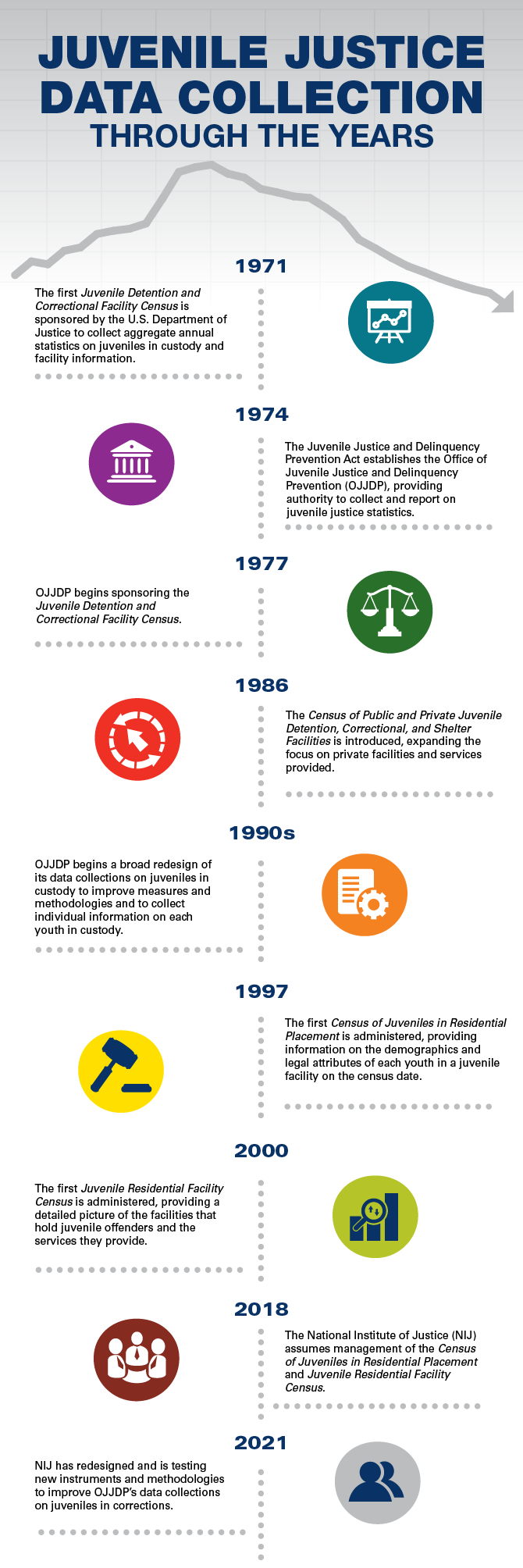Juvenile Justice Data Collection Through the Years
1971: The first Juvenile Detention and Correctional Facility Census is sponsored by the U.S. Department of Justice to collect aggregate annual statistics on juveniles in custody and facility information.
1974: The Juvenile Justice and Delinquency Prevention Act establishes the Office of Juvenile Justice and Delinquency Prevention (OJJDP), providing authority to collect and report on juvenile justice statistics.
1977: OJJDP begins sponsoring the Juvenile Detention and Correctional Facility Census.
1986: The Census of Public and Private Juvenile Detention, Correctional, and Shelter Facilities is introduced, expanding the focus on private facilities and services provided.
1990s: OJJDP begins a broad redesign of its data collections on juveniles in custody to improve measures and methodologies and to collect individual information on each youth in custody.
1997: The first Census of Juveniles in Residential Placement is administered, providing information on the demographics and legal attributes of each youth in a juvenile facility on the census date.
2000: The first Juvenile Residential Facility Census is administered, providing a detailed picture of the facilities that hold juvenile offenders and the services they provide.
2018: The National Institute of Justice (NIJ) assumes management of the Census of Juveniles in Residential Placement and Juvenile Residential Facility Census.
2021: NIJ has redesigned and is testing new instruments and methodologies to improve OJJDP’s data collections on juveniles in corrections.


